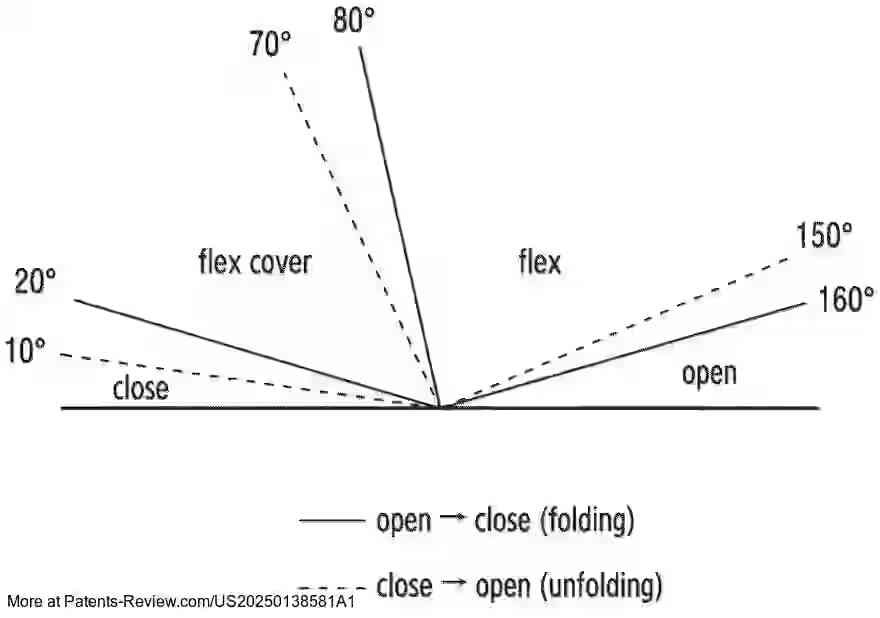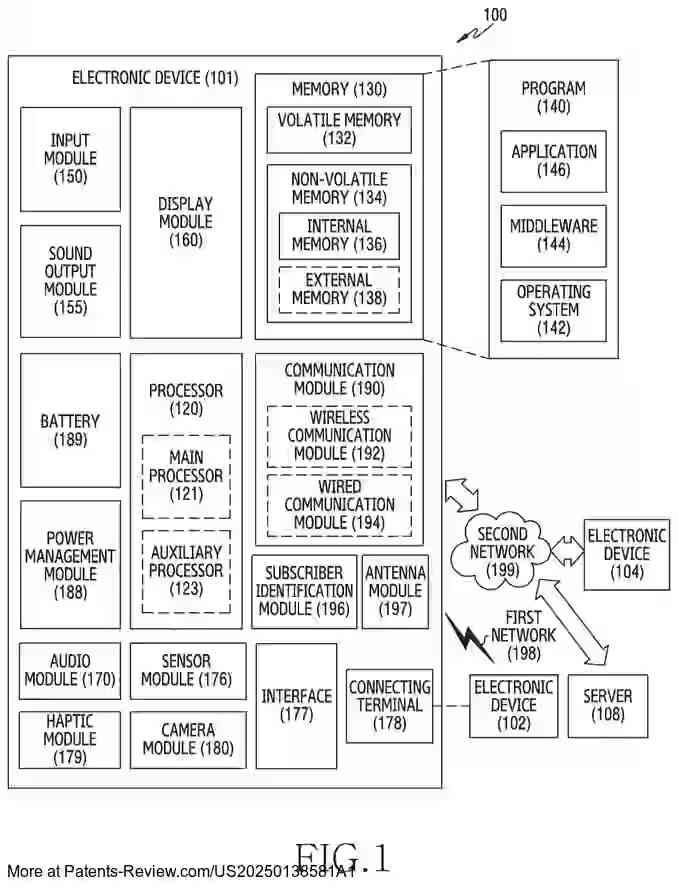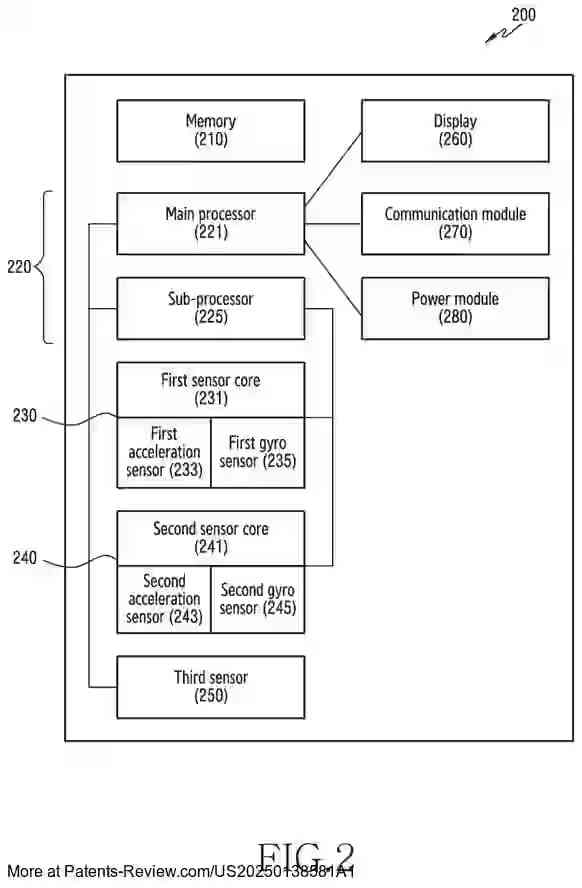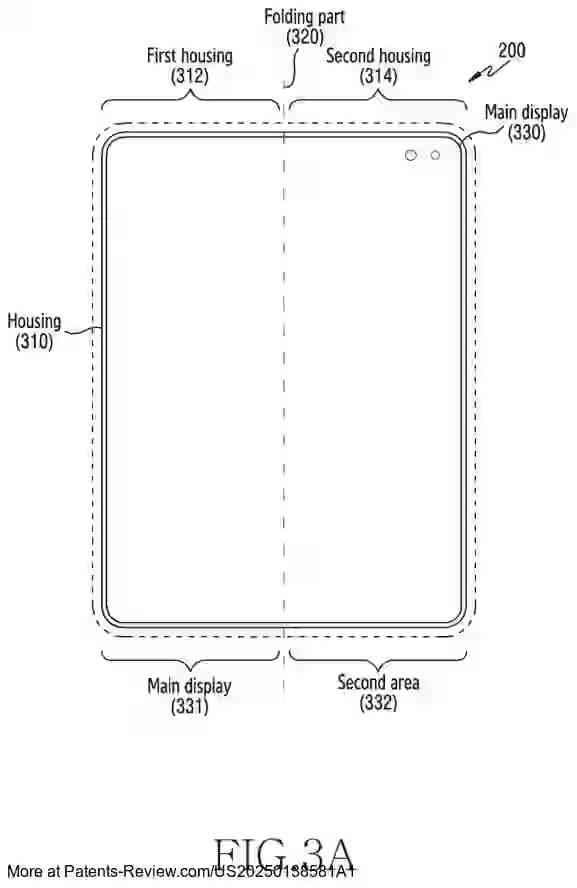FLEXIBLE ELECTRONIC DEVICE AND OPERATION METHOD THEREOF
US20250138581
2025-05-01
Physics
G06F1/1618
Inventor:
Assignee:
Applicant:
Drawings (4 of 16)




Smart overview of the Invention
A flexible electronic device is introduced, featuring a housing and a flexible display divided into a first and second portion. It incorporates multiple sensors, including a first, second, and third sensor, alongside a processor and memory. The processor's role includes monitoring the transition of the display from folded to unfolded states using the third sensor. Upon detecting this transition, it activates the first and second sensors to measure the relative position or angle between the display's portions. This setup aims to enhance device functionality through precise mechanical state detection.
Background
The field of electronic devices is evolving to meet user demands for enhanced portability and convenience, leading to innovations like flexible devices. These devices can change their mechanical state based on user gestures, which can otherwise lead to usability issues if not accurately detected. To address this, various sensors are employed to determine changes in mechanical states effectively. However, challenges such as measurement errors and increased power consumption persist with conventional sensors like acceleration, gyro, and Hall sensors.
Technical Solution
To improve accuracy in determining mechanical state changes while maintaining low power consumption, the invention proposes using sensors selectively according to their characteristics. This approach simplifies sensor arrangements without compromising performance. By doing so, the device can accurately detect changes in its mechanical state under various conditions or at user-specified times, thereby enhancing usability.
Device Operation
The electronic device comprises several components including a housing, flexible display, multiple sensors, a processor, and memory. When the display transitions from folded to unfolded states, the third sensor triggers activation of additional sensors to measure positional changes between display sections. This process ensures accurate monitoring of mechanical state changes with minimal power use by leveraging different sensor types strategically.
Implementation Details
The detailed description provides insights into how these embodiments can be realized in practice. It discusses network communication capabilities involving short-range and long-range networks and outlines the device's internal components like processors, memory modules, and sensor configurations. The processor manages data processing tasks efficiently by utilizing both main and auxiliary processors for optimized performance and power management.